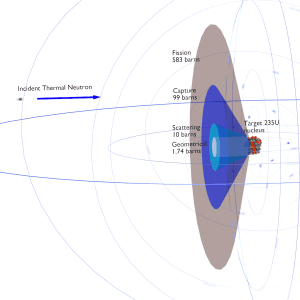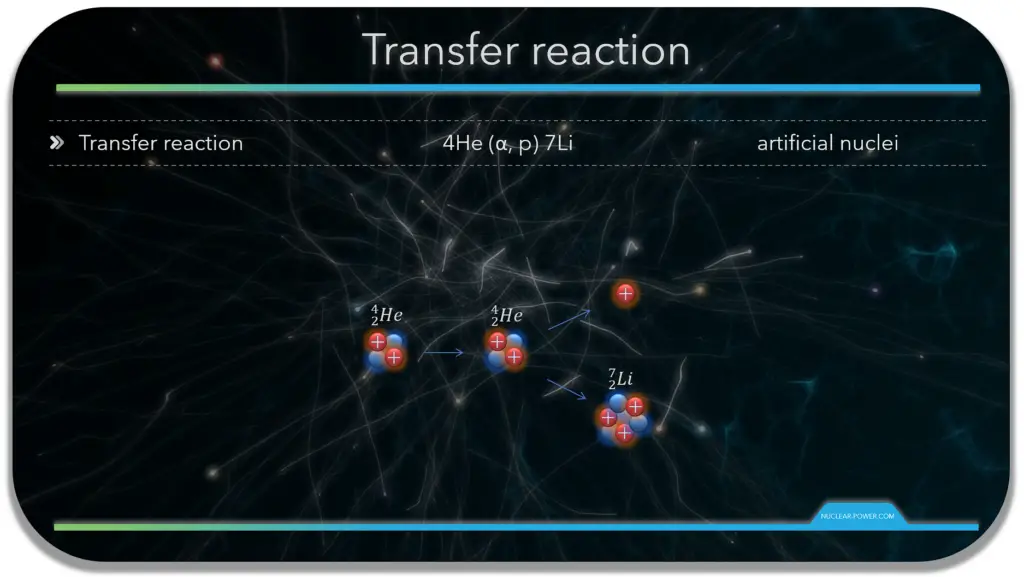Transfer reactions are nuclear reactions in which one or more nucleons are transferred to the other nucleus. These reactions are further classified as:
-
- Stripping reaction in which one or more nucleons are transferred to a target nucleus from passing particles. For example, the neutron stripping in the (d, p) reaction.
- Pick-up reaction in which one or more nucleons are transferred from a target nucleus to a passing particle. For example, the neutron pick-up in the (p, d) reaction.
- Break-up reaction in which a breakup of a projectile into two or more fragments occurs.
- Knock-out reaction in which a single nucleon or a light cluster is removed from the projectile by a collision with the target.
These reactions are common in particle accelerators and astrophysics. These are useful in studying outer shell structure of nuclei. Single- and multi-nucleon transfer reactions have long been a useful tool in nuclear spectroscopy. Generally, one considers that a single nucleon (or cluster of nucleons) transfers from one nucleus to another in a direct one-step process.
Main Characteristics of Nuclear Reactions
In nuclear physics, the nuclear cross-section of a nucleus is commonly used to characterize the probability that a nuclear reaction will occur. The cross-section is typically denoted σ and measured in units of the area [m2]. The standard unit for measuring a nuclear cross-section is the barn, equal to 10−28 m² or 10−24 cm². It can be seen that the concept of a nuclear cross-section can be quantified physically using a “characteristic target area,” where a larger area means a larger probability of interaction.
 For a given event, the cross-section σ is given by
For a given event, the cross-section σ is given by
σ = μ/n
where
- σ is the cross-section of this event [m2],
- μ is the attenuation coefficient due to the occurrence of this event [m-1],
- n is the density of the target particles [m-3].
